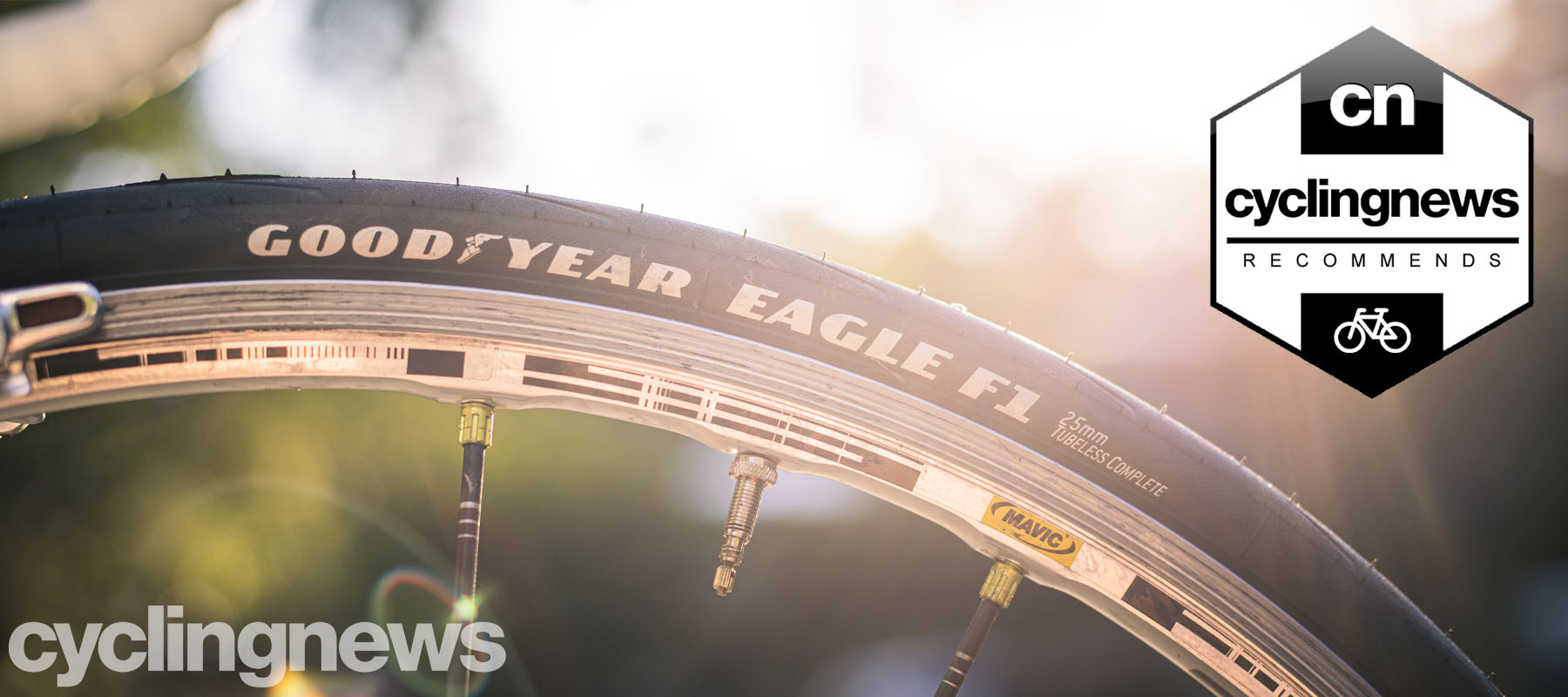Cyclingnews Verdict
The combination of the price, on-road performance and easy tubeless setup, make the Goodyear Eagle F1 a tough combo to beat
Pros
- +
Dual-angle bead solves difficult tubeless setup
- +
Supple ride quality
- +
Price
Cons
- -
Not using yellow logos is a missed opportunity
You can trust Cyclingnews
Goodyear developed its first bicycle tyre in 1898, alongside a range of... umm, horseshoe pads and poker chips, naturally. Over the years, the American company phased out is cycling rubber, however in 2018, the automotive behemoth breathed new life into its rubber for pedal power with a full range of road and MTB tyres.
Back in August, the brand introduced a new collection, which included the Eagle F1 'ultra-high performance all-around race tyres'. The market for road tyres is increasingly crowded, and I've been racking up miles on the new Tubeless Complete version in the 25mm width. Do they stack up against the some of the best road bike tyres from Continental, Pirelli, and Michelin, or have these Eagles had their wings clipped?
Design and aesthetics
With Goodyear's prevalence in the automotive world, it's fair to say it knows a thing or two about rubber and how it interfaces with various road types. But in designing the Eagle F1 tyres, the brand partnered with California-based Rubber Kinetics to produce the Dynamic GSR compound. Featuring two of the current road tyre buzzwords, GRS stands for Graphene Silca Road. Goodyear says this compound is a mix of synthetic and natural rubbers topped off with Graphene and 'Amphoras Round Silica.' According to Goodyear, this mix improves rolling efficiency by 10.1 per cent, traction by 8 per cent and wear resistance by 7.8 per cent when compared to a 'standard compound'.
Below the rubber is puncture protection layer that Goodyear calls R:Shield. Every tyre company makes similar claims that can only truly be proved or disproved by outfits like Bicycle Rolling Resistance (who are yet to test the Eagle F1), but the major innovation here is Goodyear's Tubeless Complete system, which comprises three main hallmarks. The first is a 'multi-layer compound added to the UHP, casings the limit air loss and is said to have the knock-on effect of improving overall durability.
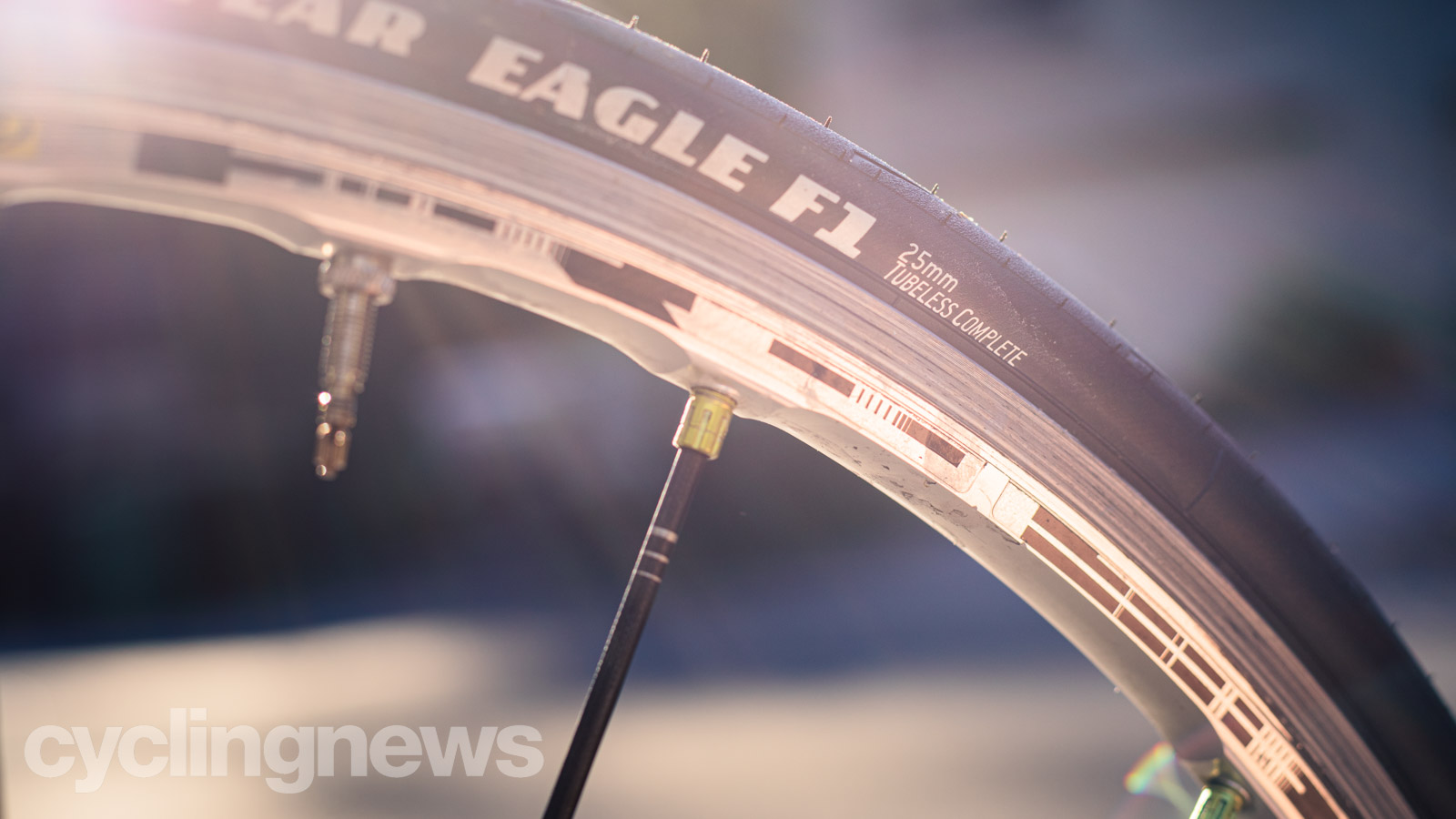
While the multi-compound layer is a more nuanced feature that Goodyear has added, the Dual Angle bead is not. The bead features a distinctive wing on the inside edge that is designed to seal up against the centre channel when setting the tyres up and push against the rim bed when the tyre is seated in the bead. The idea here is to not only make seating the tyres less of a fuss but also to slow down air loss further overnight.
Goodyear has shaped the dual-angle bead so it will play nicely with Tubeless Crotchet (hooked rims), or tubeless straight sidewall rims (hookless). Goodyear also makes a tube-type version of this tyre, which are only compatible with hooked rims.
Finally, we have what the American firm calls Forward Facing Fitment, which doesn't refer to the installation process. Instead, Goodyear has designed these tyres around the latest crop of wide rims. With the internal rim width largely determining how the casing will spread across the rim, this is simply Goodyear defining the inner rim width that creates an ideal profile for traction and rolling performance. Goodyear is far from the first brand to do this, and we are even seeing some rim manufacturers release similar charts.

Mounted on a 19mm wide rim (internal) as per Goodyear's recommendation, they measured 25.06mm according to my calipers and tipped my Feedback Sports scale at 280g.
These tyres were launched back in August, and the Eagle F1 tyres fall in just beneath the Eagle F1 Supersport. The main difference between the two is the Supersport lacks the 'dual integrated tread zones' on the shoulder of the tread cap and a slightly lighter casing.
Ride experience
I will admit to being an early convert to tubeless tyres. With sealant in hand and an air compressor, I have willed many a way-too-tight tyre over the bead of a rim, helped by quite a lot of swearing and more than a few broken tyre levers - all in pursuit of the luxurious ride and grip afforded by ditching an inner tube.
However, it's this process that is most often cited reason riders haven't ditched their innertubes once and for all. I think the ease afforded by the Dual-Angle bead will be able to convince even the most die-hard tube type riders to make the jump.
To start, getting the tyre over the edge of the rim is easily accomplished without the aid of levers. They are tight — otherwise, they would leak — but not nearly as much as something like a non-tubeless Vittoria Corsa.
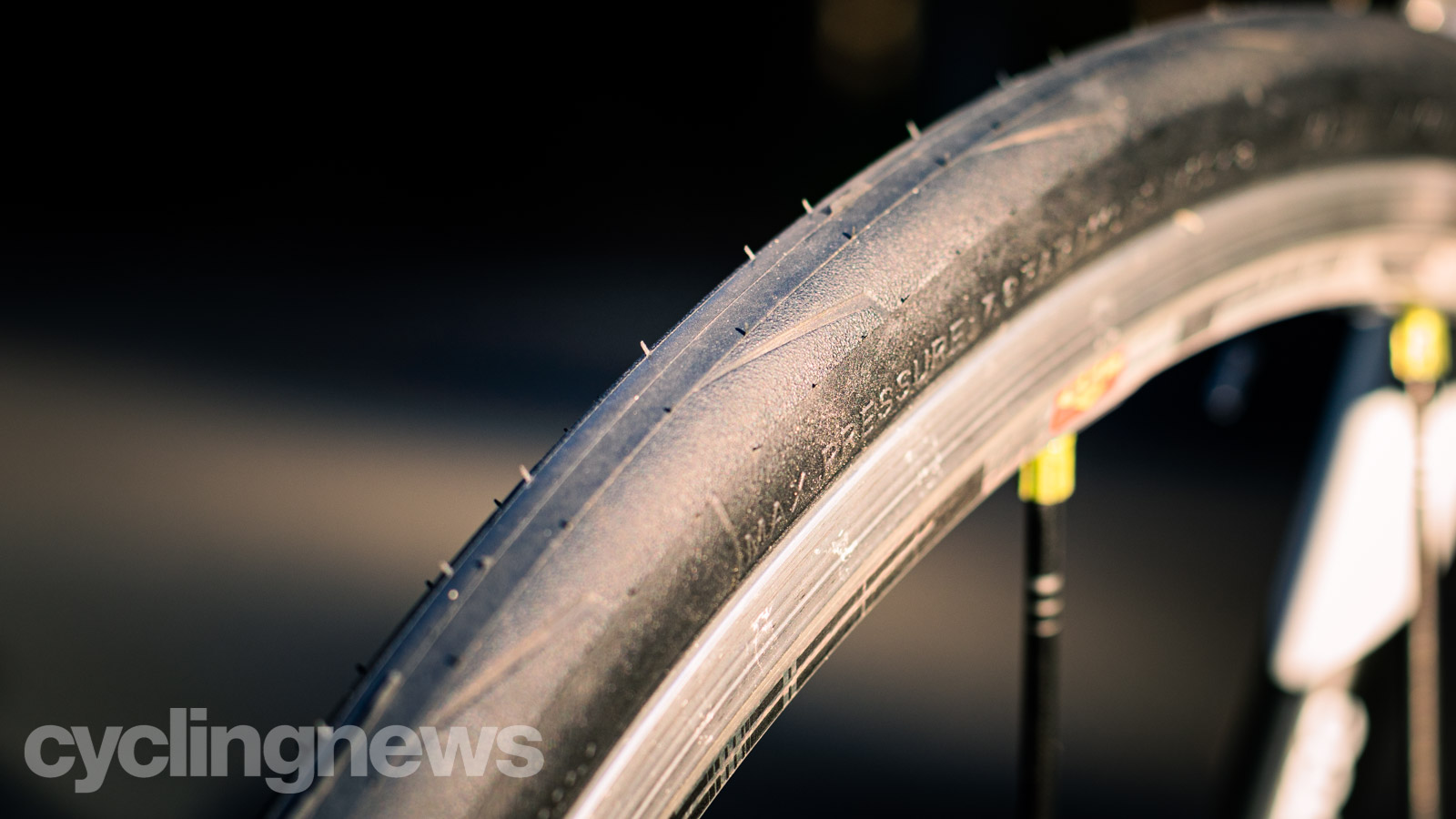
While I have an air compressor that lives permanently under my workbench and all manner of flash pumps and chargers, both store-bought and DIY, I decided to put the claims Goodyear makes about the Dual Angle bead to the test. So I set myself the challenge of seating the Eagle F1s to a set of DT Swiss E1850 Spline DB23 with a cheapo Syncros pump I used to keep at my in-laws' house.
To my shock, after about half a dozen pumps, I heard the glorious ping of tyre beads seating. No sweating or furious pumping needed; seating the tyre required no more effort than inflating a newly installed tube. To be clear, my Syncros floor pump is not some fancy high-volume air pump; this is the cheapest floor pump offered by Scott's in-house component brand.
This was not a fluke of the sun, moon, and all the planets being aligned on the day I first received these tyres; I've subsequently mounted them on everything from some high-end ENVE hoops to an older set of Mavic wheels that usually require a blast from the compressor, with this same pump.
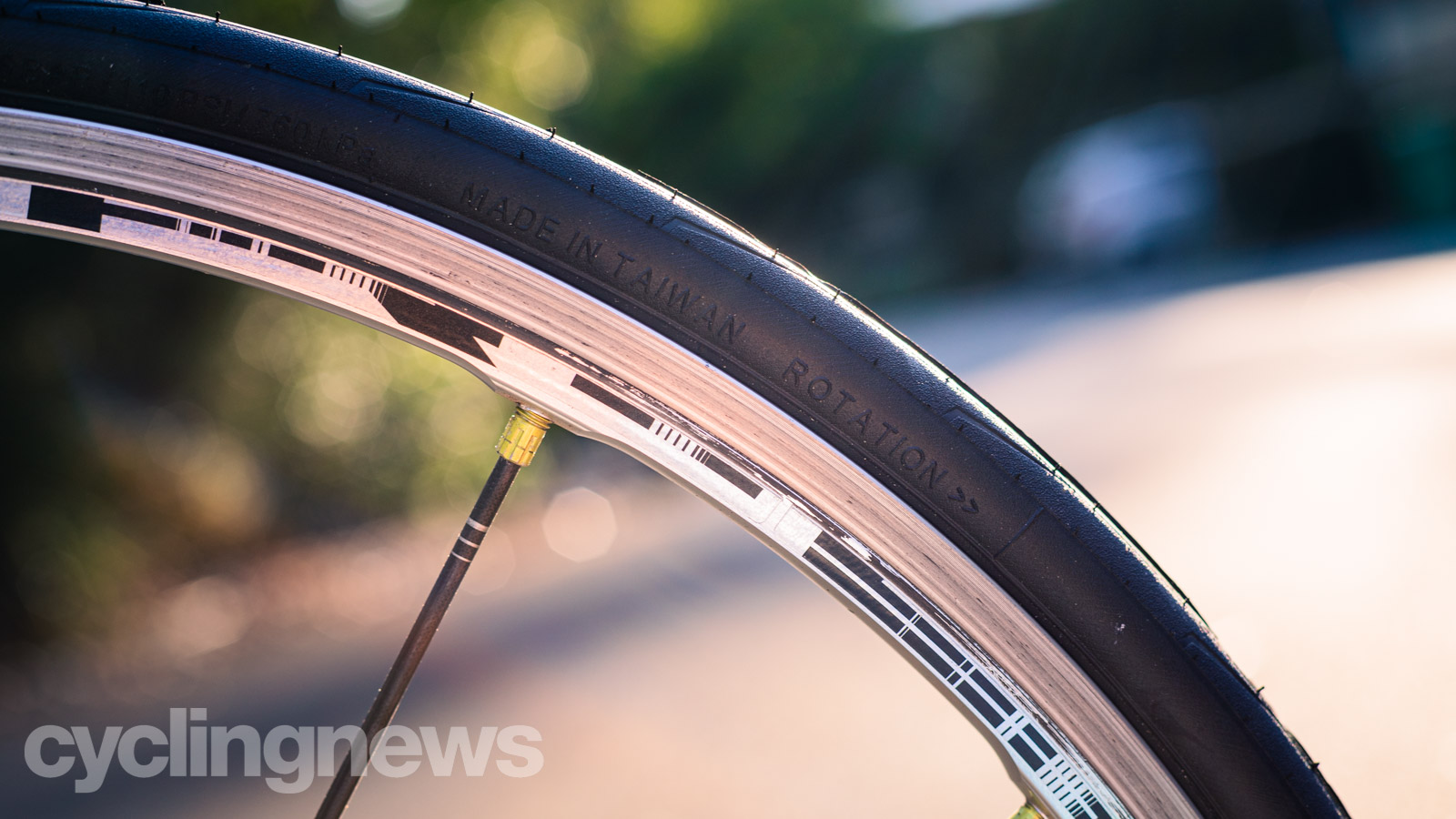
Once I got the Eagle F1 out on the road, they were equally impressive. Pumped up to between 65-70psi depending on the rim, the Eagle F1s spin along effortlessly over the smooth tarmac. As the road surface deteriorates, they dampen road imperfections as well, if not better than the Continental GP5000s that were mounted to my wheels before the Goodyears.
The grip is tenacious in dry conditions, and I was confident to carry momentum through tight corners. I've yet to find the limits of their grip (knock on wood), but with the bike leaned over pushing through the apex, they are good-natured and comfortably predictable. Straight-line and braking traction is also on par with the GP5000.
There are quite a few high-end tyres that offer spectacular grip in the dry but manage the inverse characteristics when a bit of moisture falls on the road; this is not the case with the Eagle F1. They aren't the grippiest of tyres in the wet, but they do maintain the majority of their predictability and poise.
Through this same period, I have had zero flats. It's hard to say how they will last in terms of durability having only spent a few months on these tyres; however they appear to be holding up well. So far, there are no cuts in the tread despite plenty of glass-strewn bike lanes and even a bit of light gravel - the tread is holding up well to plenty of abuse.
Verdict
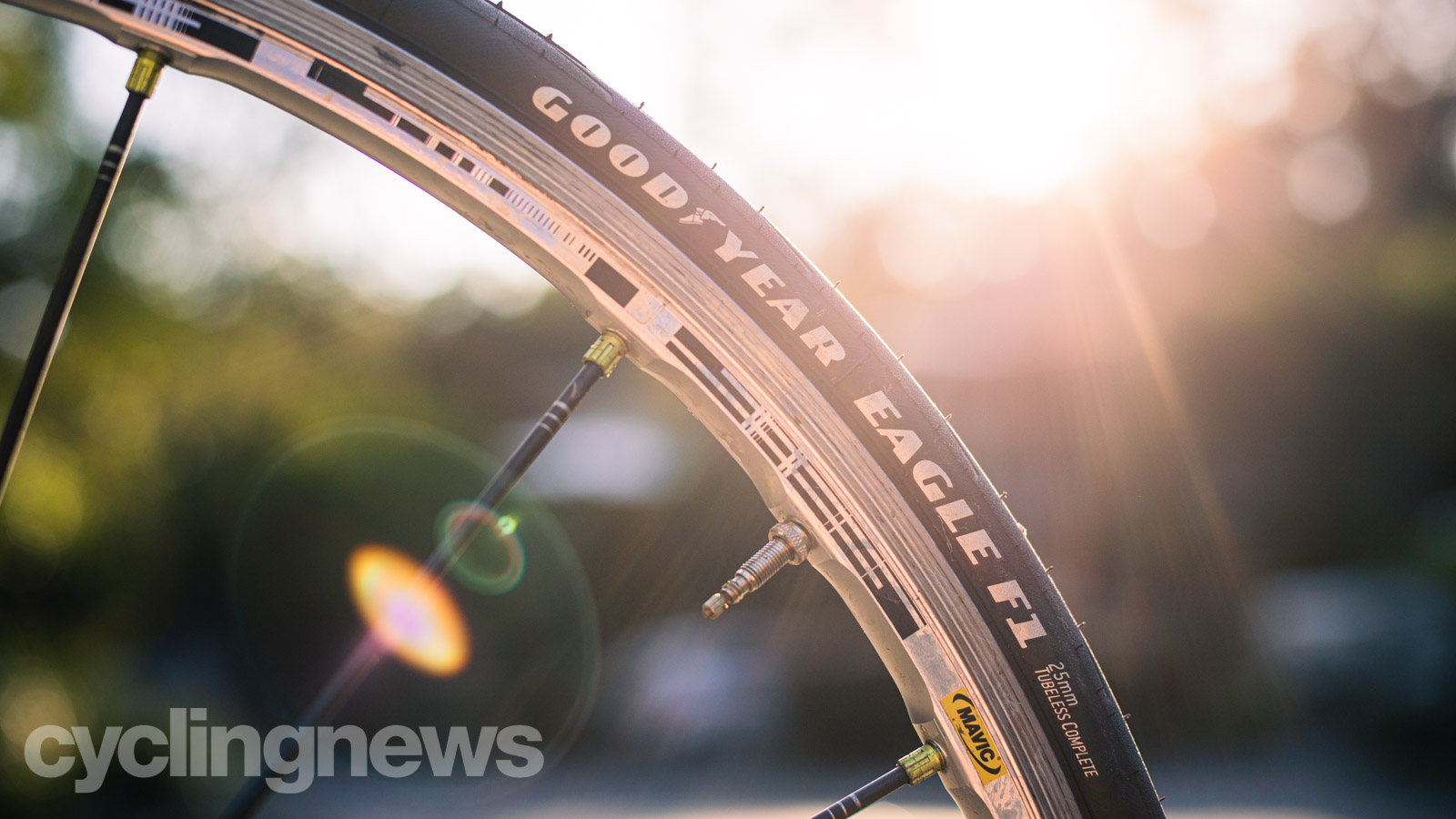
The field of high-performance 120tpi tyres is exceptionally crowded. Whether it's options from Pirelli, Continental, Schwalbe or Michelin - pretty much any tyre you choose will not disappoint out on the road. The easy tubeless setup really sets these tyres apart from its rivals; to date, they are the easiest I've come across to get seated, and all you need is a mediocre floor pump.
And then there is the price; the 25mm version of the Tubeless Complete tyres come in at $65 / £50 / AU$90 which costs less than similar options from Pirelli and Continental, too.
I think Goodyear dropped the ball not going for the yellow logo, but they do come in a tan sidewall. For a brand that is so entrenched in motorsport, to not capitalise on that seems like a missed opportunity, especially given how much crossover there is between cycling and motorsport fans.
But, for the performance on offer, ease of setup and most of all the price, it’s a proposition that’s tough to beat.
Based on the Gold Coast of Australia, Colin has written tech content for cycling publication for a decade. With hundreds of buyer's guides, reviews and how-tos published in Bike Radar, Cyclingnews, Bike Perfect and Cycling Weekly, as well as in numerous publications dedicated to his other passion, skiing.
Colin was a key contributor to Cyclingnews between 2019 and 2021, during which time he helped build the site's tech coverage from the ground up. Nowadays he works full-time as the news and content editor of Flow MTB magazine.
